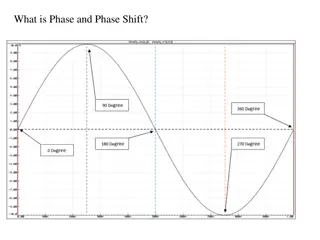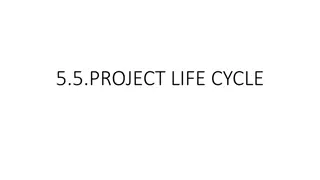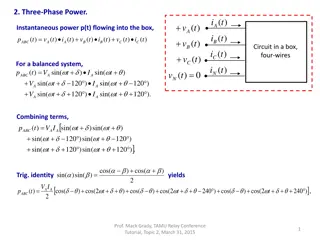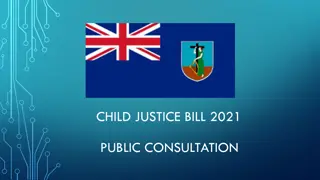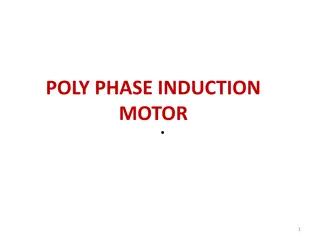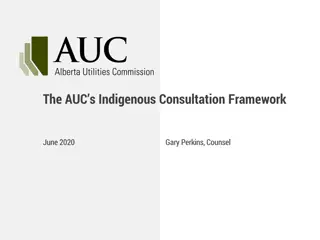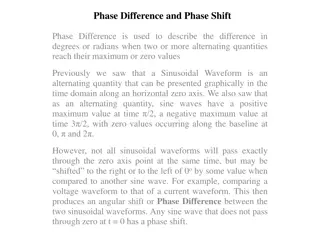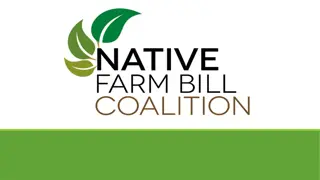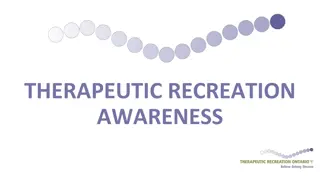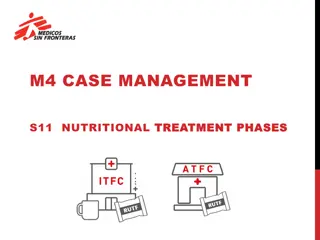Therapeutic Products Bill Consultation Phase: Summary of Purpose and Design
The Therapeutic Products Bill consultation phase in Auckland discussed the purpose and design of the Act to ensure safety, quality, and efficacy of therapeutic products. The team included key advisors from MoH, guiding principles emphasized benefits outweighing risks, and a framework for regulation was outlined with focus on transparency and international alignment.
Download Presentation

Please find below an Image/Link to download the presentation.
The content on the website is provided AS IS for your information and personal use only. It may not be sold, licensed, or shared on other websites without obtaining consent from the author. Download presentation by click this link. If you encounter any issues during the download, it is possible that the publisher has removed the file from their server.
E N D
Presentation Transcript
Therapeutic Products Bill-consultation phase Medical devices session Auckland 19 March 2019
Therapeutic Products Bill: Devices Session Agenda for today: 1. 2. 3. 4. 5. 6. Purpose & design of the Bill Scope & Definitions Product-related aspects Activity-related aspects Transition Regulator powers & enforcement
Todays team Sheila Swan Chief Advisor, Regulatory Policy, MoH Hannah Adams Senior Analyst, Regulatory Policy, MoH Susan Martindale Principal Policy Analyst, Regulatory Policy, MoH Chris James General Manager, Medsafe, MoH Pamela Randell Project Coordinator, MoH
Purpose & Design of the Bill Purpose: The purpose of this Act is to protect personal and community health by: (a) ensuring acceptable safety, quality, and efficacy or performance of therapeutic products across their lifecycle; and (b) regulating the manufacture, import, promotion, supply, and administration or use of therapeutic products. Design Principles-based framework with three subordinate tiers.
Guiding principles of the Bill The Regulator and any other person exercising a power under this Act must be guided by the purpose of this Act and the following principles: (a) the likely benefits of therapeutic products should outweigh the likely risks associated with them: (b) regulation of therapeutic products should- (i) be proportionate to the risks posed by the products; and (ii) support the timely availability of therapeutic products: (c) the administration of this Act should be carried on in an open and transparent manner: (d) there should be co-operation with overseas regulators, compliance with international obligations, and, if appropriate, alignment with international standards and practice.
There will be less detail in legislation and more in the regulations and regulator-made instruments Instrument Content Process Therapeutic Products Act Primary legislation sets out: the purpose of the Act provides a set of principles and criteria to set the parameters of the regulatory regime sets boundaries for the scope and development of subordinate legislative instruments contains the primary elements of the regulatory regime provides enforcement powers sets out accountability arrangements Legislative instrument, made by Parliament Regulations Regulations will contain further detail on: matters not appropriately dealt with in regulator-made instruments (such as fee setting) matters to do with accountability key elements of the regulatory regime that will remain relatively stable and which are significant to the design of the regulatory requirements Legislative instrument, made by the Governor-General by Order and Council Regulations will be subject to review by the Regulations Review Committee Schedule 3 lists the matters that can be specified in regulations Contain the detail of the regulatory requirements Legislative instrument, made by the regulator Rules Schedule 3 lists the matters that can be specified in rules Subject to review by the Regulations Review Committee Contain administrative detail of the scheme Non-legislative instrument, made by the regulator Notices Schedule 3 lists the matters that can be specified in notices The regulator must not issue a notice unless satisfied that doing so if necessary or desirable to promote the purposes of the Act; and it is no broader than is reasonable necessary to address matter that gave rise to it
Regulator Form In providing advice to Cabinet on the Regulator Form, the Ministry will be considering: Independence: decision-making and operations Accountability Sustaining capability and capacity Positive regulatory culture Efficiency and effectiveness (includes cost of establishment and ongoing operations) Flexibility
What is a therapeutic product? A product is a therapeutic product if- (a) it is intended for use in, on, or in relation to humans for a therapeutic purpose; or (b) it is specified in the regulations to be a TP; or (c) it is intended for use as an active ingredient of a medicine. A naturally occurring thing . may become a TP if it is changed from its naturally occurring state .. BUT a product that would otherwise be a therapeutic product under (a) is not a therapeutic product if it is a natural health product. [Section 16 (paraphrased)].
What does therapeutic purpose mean? The following are therapeutic purposes: (a) preventing, diagnosing, monitoring, alleviating, treating, curing, or compensating for a disease, ailment, defect, or injury (b) influencing, inhibiting, or modifying a human physiological process (c) testing the susceptibility of humans to a disease or an ailment (d) influencing, controlling, or preventing human conception (e) testing for human pregnancy (f) investigating, replacing, modifying, or supporting part of a human s anatomy (g) supporting or sustaining human life (h) disinfecting medical devices (i) a purpose connected with a purpose referred to in paragraphs (a) to (h).
What does therapeutic purpose mean (contd) Something is intended for use for a therapeutic purpose if it is, or is in a class of things that are- (a) ordinarily used for that purpose; or (b) intended by the responsible manufacturer to be used for that purpose; or (c) represented as being for use for that purpose; or (d) likely (because of the way in which it is presented or for any other reason) to be used for that purpose.
The Bill would regulate 4 types of product Medicines Active ingredients of medicines (AMIs) Medical devices Type-4 products.
What is a medical device? The distinguishing feature of a medical device is that it: achieves, or is likely to achieve, its principal intended action by means other than- (A) pharmacological, immunological, or metabolic means; or (B) the action of something that comprises, contains, or is derived from human or animal cells or tissues (although its function may be assisted by the means in A and B). Regulator s notices can also be used to declare something to be a medicine, AMI, medical device or type-4 product.
Diversity of products and risk The term medical device covers a wide range of products across a wide risk spectrum, including: Surgical equipment Imaging and other diagnostic equipment Implants Dressings and catheters Software In-vitro diagnostic tests Hearing aids. Question: Is better regulation needed for devices such as plano contact lenses, dermal fillers used for cosmetic rather than therapeutic purposes?
The new scheme would adopt the GHTF/IMDRF global model for device regulation Devices must meet Essential Principles (relating to safety and performance) Devices are allocated a Risk Classification using international classification rules - this determines the level of regulatory oversight and conformity assessment Conformity assessment procedures - the required procedures are linked to the risk class for the device The manufacturer is responsible for maintaining a technical file (STED) demonstrating conformity to the essential principles and for completing a declaration of conformity Conformity assessments are undertaken by independent Conformity Assessment Bodies (CABs) recognised by the regulator (except for the lowest risk class of devices which can be self- assessed by the manufacturer).
Rules & Notices will specify the detail Rules would set product standards for medical devices that, consistent with the global model, would specify: The 2 broad categories of device In-vitro diagnostic devices (IVDs) Devices that are not IVDs Essential Principles for each category of device Risk classifications for each category and the rules for determining which risk class a device belongs in Conformity assessment procedures. A Notice would list the Conformity Assessment bodies recognised by the Regulator.
There would be more regulation of medical devices across their lifecycle Design, Develop & Test Manufacture Market Entry Supply and use Post-Market Now: Voluntary adverse event reporting by product sponsors Limited enforcement responses Now: Not regulated Now: Not regulated. Some devices required to meet relevant standards specified in other legislation Now: Suppliers required to list some medical devices on the Ministry s database within 30 days of market entry Future: Register of all approved devices would be required NZ wholesalers would require a licence (unless exempt) Would be able to apply use- and supply-restrictions Now: Not regulated Future: NZ manufacturer s would require a licence Overseas manufacturer s audited and checked via product approval process Future: Clinical trials would require a licence Product development data would be required as part of product approval Future: Mandatory adverse event reporting by product sponsors Full suite of enforcement responses Future: Pre- market product approval would be required (with some exceptions)
Product-related controls Medical devices must not be imported or supplied unless the product is: approved approval-exempt; or the person who is importing or supplying is authorised (via the legislation, a licence or permit) to do so. The importer must: be the sponsor for the product; or have the written consent of the sponsor; or be authorised to import without the sponsor s consent.
The Bill would enable different product approval pathways The approval pathways would include: approval based on scrutiny of evidence of conformity assessment/ overseas approval of devices approval without scrutiny if devices are under a Mutual Recognition Agreement (eg, those that fall under the EU MRA) self-declaration and notification for devices in the lowest risk class. The NZ regulator would need to publish and maintain a list of recognised conformity assessment bodies (in a Regulator s Notice) These will be a mix of third party conformity assessment bodies and overseas regulators whose conformity assessments will be recognised. The NZ regulator is unlikely to be doing conformity assessments itself.
There would be grouping rules for products with shared characteristics It would be possible for a single application to cover multiple products provided they have specified characteristics in common. We envisage the grouping rules would be similar to those in Australia where: o Lower risk devices can be grouped if they have the same manufacturer, sponsor, risk classification, and GMDN code. o High risk devices (class III, AIMD and most class 4 IVDs) must have the same unique product identifier as well as the same manufacturer, sponsor, risk classification, and GMDN code. The new scheme would also accommodate applications for kits and procedure packs. o
Criteria for product approval The criteria for product approval are all of the following: the quality, safety, and efficacy or performance of the product for the purpose for which it is to be used are satisfactorily established the likely benefits of the product outweigh the likely risks associated with it any other criteria for approval that are specified in the rules. Product standards may relate to the product, its manufacture, its packaging and labelling, its product or consumer information.
Evaluating an application for approval The Regulator must evaluate the application having regard to: the criteria for product approval whether the product, if approved, will comply with the specified product standards whether the person named in the application as the proposed sponsor meets the criteria for a sponsor. After evaluating the application, the Regulator must- grant approval or refuse to grant approval.
Approvals (contd) Approvals can be: Subject to conditions - which can be specified in the Rules or imposed by the Regulator at the time of approval or later. Conditions can be added, varied or removed by the Regulator Granted with or without an end date Cancelled for grounds see section 108.
Changes to approved products Major changes to medical devices: Major changes will be listed in the Rules Approved product + major change = different product & new approval Minor changes to medical devices: There are 2 types: o those that must be notified to the Regulator. These will be listed in the Rules o any other minor changes. These do not need to be notified or approved The original approval covers all the minor changes.
Sponsors are important players A sponsor: Is the person to whom a product approval is granted (or later transferred); or For an approval-exempt product, is the person named (individually or as a class of person) in the Regulator s Notice declaring the product (or class of product) to be approval-exempt.
Criteria for being the sponsor of an approved product (A) - Individual normally resident in NZ, or - Body corporate incorporated in NZ; or - The Crown (B) The person imports or arranges the import of the product, or manufactures it in NZ or arranges for its manufacture in NZ (C) Are, or have a contractual relationship with, the responsible manufacturer (D) Agree to be the sponsor (E) Are a fit and proper person (F) Are, or will be, able to comply with the set of sponsor obligations.
Sponsors have important obligations The sponsor of an approved product is obligated to: Comply with the approval Ensure the product complies with its approval & any specified product standards Ensure another person complies with any must do / must not do requirements placed on that person by the approval Comply with any requirements in the regulations in relation to: o Product quality, safety, and efficacy or performance (includes ongoing monitoring) o Prescribing and consumer information, packaging & labelling o Release for supply o Market actions (eg tracing and recall), record keeping, auditing o Giving information to the regulator (eg adverse event reporting).
Some activities require an authorisation Manufacturing is a controlled activity requiring an authorisation A licence would be the usual way of authorising manufacture in NZ A person is a manufacturer if they do anything that is part of manufacturing the product (s31(2)) The responsible manufacturer is the one primarily responsible for the manufacture of the product (s31(3)). Relevant considerations are: o who initiated manufacture o whose name would the device be supplied under o who is responsible for overall QA and QC The licence would spell out the scope of what is permitted and could also authorise those manufacturers who supply the responsible manufacturer with components or sub-assemblies etc.
A person manufactures a device if they: Produce the device Do anything that is part of the process of producing the device or bringing it to its final state (eg, testing, sterilising, releasing for supply, packaging, labelling) Do anything that is part of remanufacturing the device. However, preparing a device for use by following the manufacturer s instructions (eg, for assembly, calibration) is NOT manufacture (s34(4)).
Remanufacture of a device Remanufacture occurs if someone alters, refurbishes, further processes a device so as to: Change its intended purpose or other major change Make it a different device Enable re-use of a device originally intended to be for single use only Enable it to be used in a way that is very different from the way the responsible manufacturer intended Note that remanufacture does NOT mean: Cleaning the device Carrying out repairs & maintenance to enable the continued use of the device in the originally intended manner
Supply by wholesale requires an authorisation A person is supplying by wholesale if they have a reasonable belief that the recipient is obtaining it in order to: o Supply it to other people in the course of their business (as, for example, a pharmacy would) o To administer it to, or use on, patients in the course of their business (as, for example, a DHB or health practitioner would) o To use it in a scientific, educational or commercial laboratory o To use it in a manufacturing or trade process A licence would be the usual way of authorising this controlled activity It would spell out the scope of what is permitted, including whether unapproved devices may be supplied We envisage using regulations to exempt those who wholesale only class I devices from needing a licence.
Conducting a clinical trial requires an authorisation A licence would be the usual way of authorising this controlled activity It would spell out the scope of what is permitted & also authorise the supply of the unapproved trial product.
Advertising controls Only approved products may be advertised Adverts must be consistent with the product approval & not misleading Regulations would be used to specify more detailed requirements.
Getting ready for the new scheme Before the scheme can commence all of the following events must have occurred: The Bill must have received Royal Assent Regulations must be developed (following consultation), signed by the Governor- General, published and in force Rules and Notices must be developed (following consultation), published and in force. The new Act, regulations, rules and notices would all come into force on the same date (the commencement date for the scheme). There is likely to be a gap of around two years between Royal Assent and commencement. During this time, companies can start to get prepared for commencement so they are ready to begin transitioning into the scheme. The transition period begins on commencement date - so perhaps around late 2022 or early 2023. The Bill gives temporary authorisations to those lawfully importing, manufacturing and supplying devices before commencement to allow them to continue those activities.
What needs to happen after commencement? Those wishing to introduce new products to the NZ market must first obtain a product approval (unless the product is approval-exempt) or other authorisation for the product Those wishing to start supplying by wholesale or start a clinical trial must first obtain a licence (or other authorisation). Those existing players who are covered by the temporary transition authorisations need to apply for scheme approvals / licences within 6 months of commencement. As soon as they have done that, their temporary approval continues on until the regulator determines their application.
The Regulator Must ensure it has a system to continuously monitor the safety of lawfully supplied products May make public safety announcements (akin to current privileged statements under the Medicines Act) May issue the following regulatory orders: Recall orders Premises restriction order Advertising remediation order Directions order Product prohibition order Medicines access limitation order. 2-tier Merits review mechanism is available.
Investigation powers The Bill: Links to the Search & Surveillance Act 2012 Has some additional powers tailored for this scheme (eg the power to test samples) Enables the Regulator to conduct routine compliance checks and enforcement activities Enables imported consignments to be detained, tested, destroyed or removed from NZ.
Therapeutic Products Bill: Enforcement The Bill has a modern hierarchy of enforcement tools: Tiered criminal offences with higher penalties Enforceable undertakings Infringement notices. Officials are considering whether to add civil pecuniary penalties as another regulatory option.
What next Sector forums in March Submissions due by 18 April Analysis of submissions & report back to Cabinet Draft Bill amended, as required Draft Bill introduced to Parliament Select Committee process (which usually includes a public submission process) Development of regulations, rules and notices will involve consultation on detail of the scheme.


